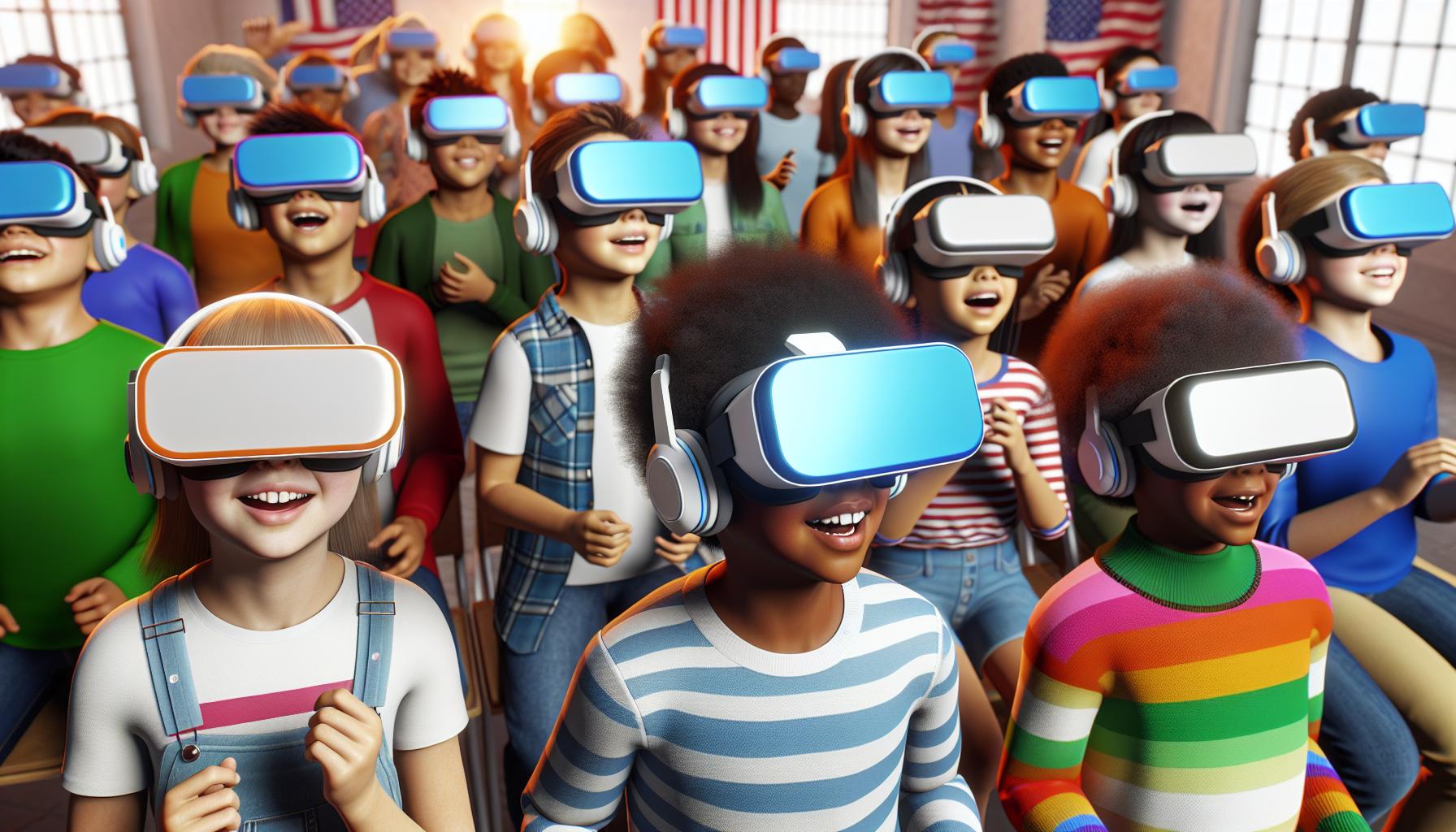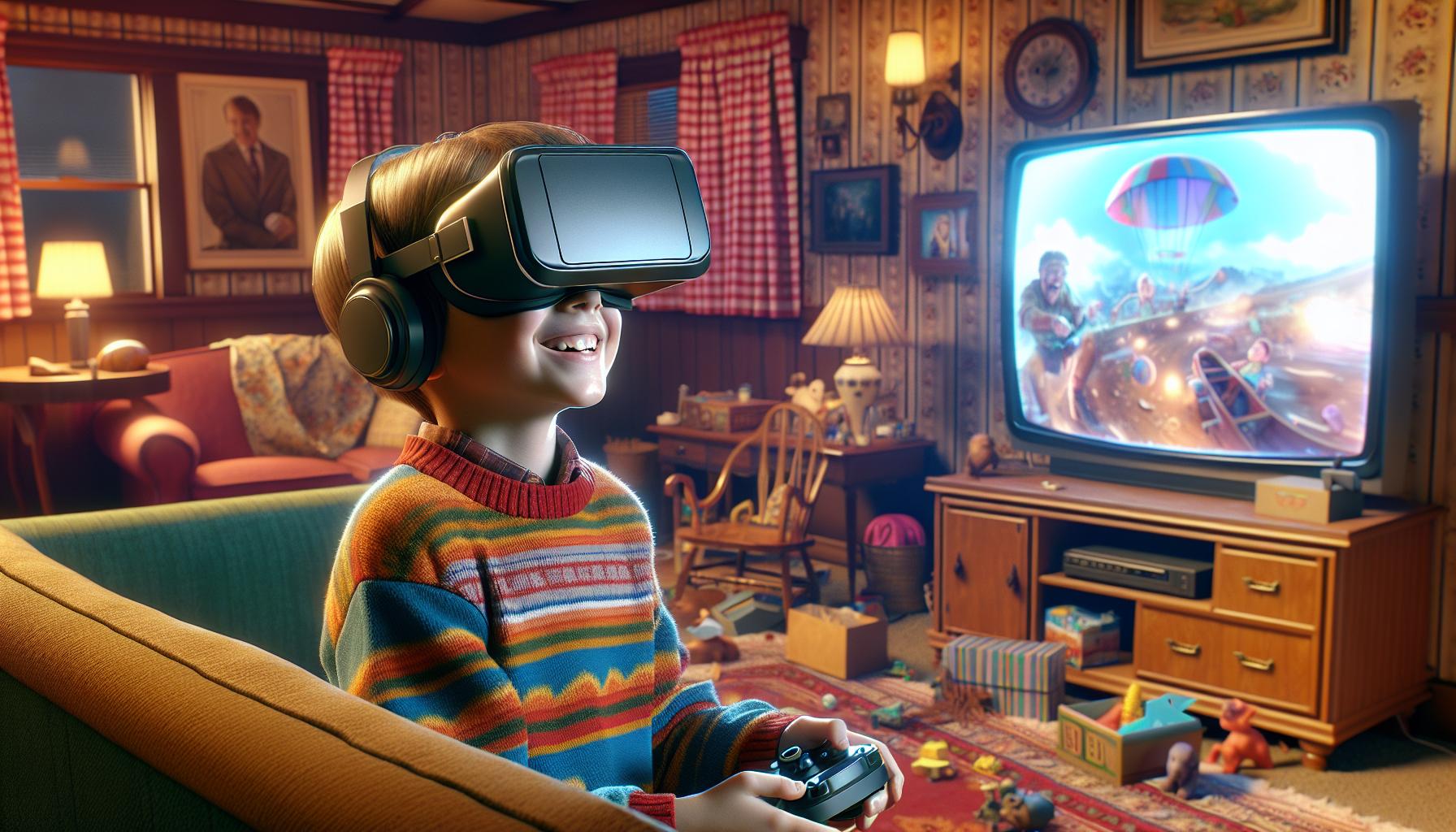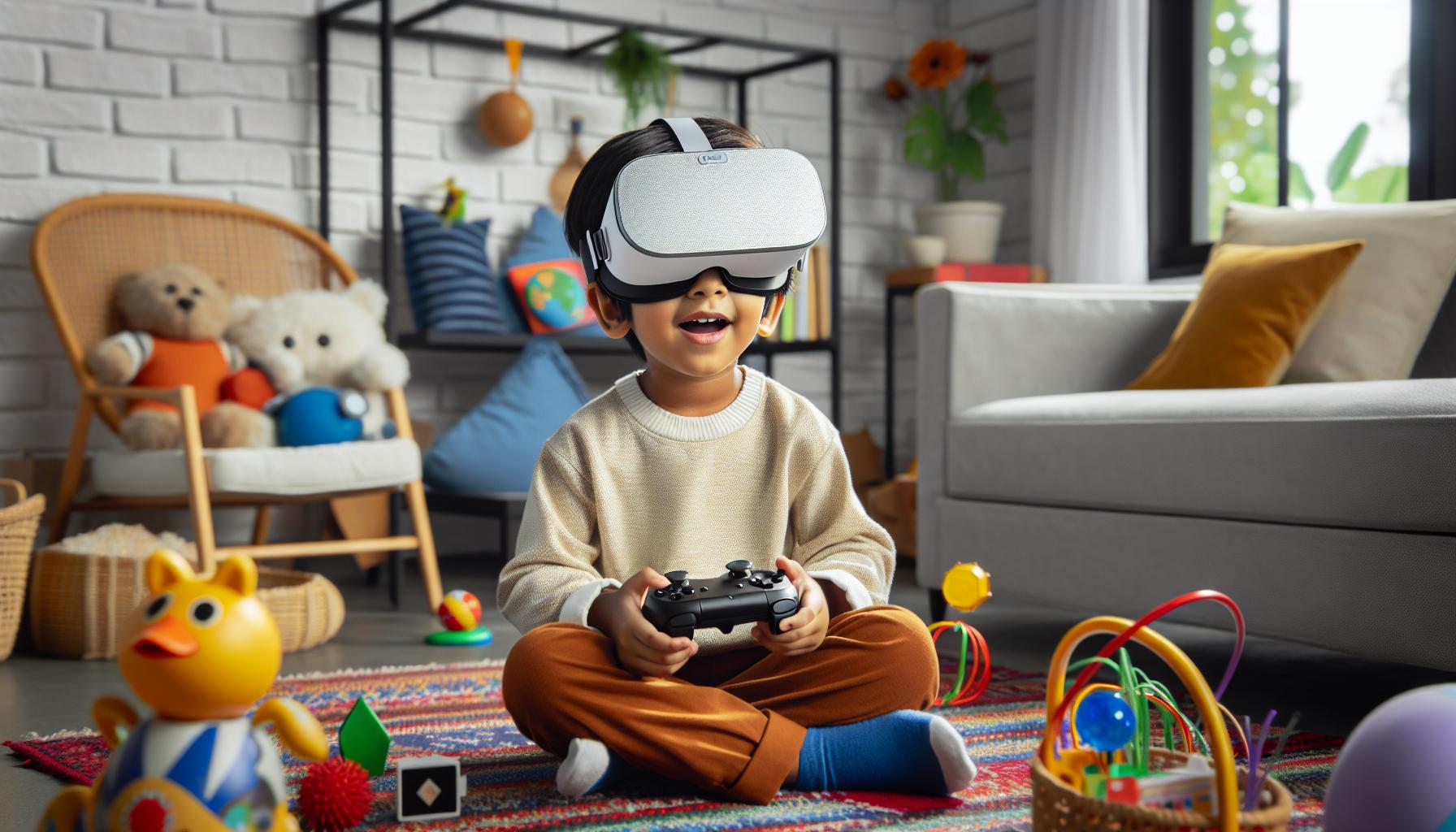Key Takeaways
- Educational Value: Virtual reality headsets provide immersive learning experiences, enhancing children’s understanding of complex subjects through interactive simulations and explorations.
- Safety and Comfort: Choosing headsets with safety compliance, ergonomic designs, and adjustable components is essential for a comfortable and secure experience for young users.
- Age-Appropriate Content: It’s crucial to select headsets that offer content tailored to children’s developmental stages, ensuring safe and engaging material that’s suitable for their age.
- User-Friendly Features: Devices with intuitive controls and user-friendly interfaces allow children to seamlessly navigate educational games and experiences, promoting independent exploration.
- Parental Controls: Many VR headsets include parental settings to manage content access and usage time, creating a safe environment for children as they explore virtual spaces.
- Creativity and Social Interaction: VR promotes creativity by allowing children to manipulate virtual environments and engage in multiplayer experiences, fostering collaboration and communication skills.
As technology continues to evolve, virtual reality is making waves beyond gaming and entertainment. Today, it’s becoming an exciting educational tool for kids, offering immersive experiences that can enhance learning and creativity. With the right virtual reality headset, children can explore new worlds, engage in interactive lessons, and develop skills in a fun and engaging way.
Choosing the right headset for kids isn’t just about the latest features; it’s also about safety, comfort, and age-appropriate content. Parents are increasingly looking for devices that provide both entertainment and educational value, making this technology a valuable addition to any child’s toolkit. Discovering the best options available can help parents navigate this innovative landscape and ensure their kids enjoy a safe and enriching virtual experience.
Virtual Reality Headset For Kids
Virtual reality headsets designed for kids offer a unique blend of entertainment and education. These devices immerse children in engaging environments, promoting interactive learning. Several factors influence the choice of VR headsets, including safety features, age appropriateness, and comfort levels.
Key Features of Kids’ VR Headsets
- Safety Compliance: Many VR headsets meet safety standards, ensuring they’re suitable for younger users. Features such as protective padding and adjustable straps enhance safety.
- Age-appropriate Content: Specific VR headsets provide content tailored for various age groups. This focus ensures children engage with suitable material that aligns with their developmental stages.
- Ergonomic Design: Most headsets feature lightweight designs, reducing fatigue during extended use. Adjustable components accommodate growing children, enhancing comfort during learning sessions.
- User-friendly Interfaces: Many headsets include intuitive controls designed for young users. Simple navigation helps children access educational games and experiences seamlessly.
- Parental Controls: Several devices incorporate parental settings, allowing adults to manage content and usage time. This feature ensures a safe environment for children as they explore virtual spaces.
- Enhanced Learning: Immersive experiences provide kids with opportunities to understand complex subjects through interactive simulations. For example, they can explore historical landmarks or venture into space.
- Creativity Boost: Virtual environments stimulate creativity, encouraging children to create and manipulate their digital surroundings. Such experiences foster innovative thinking and problem-solving skills.
- Social Interaction: Some VR platforms enable multiplayer experiences, allowing kids to interact with peers in virtual settings. This social aspect can enhance collaboration and communication skills.
Selecting the right virtual reality headset for kids requires careful consideration of these features and benefits. The proper device can transform educational content into captivating experiences, making learning both fun and effective.
Benefits of Virtual Reality for Children

Virtual reality (VR) offers numerous advantages for children’s development. By creating immersive environments, VR significantly enhances educational opportunities and nurtures creativity.
Enhancing Learning Experiences
VR transforms traditional educational methods by offering interactive and engaging simulations. Children absorb knowledge more effectively through hands-on experiences, such as exploring historical events or conducting virtual science experiments. Studies indicate that learners experience 70% retention with experiential learning compared to just 20% with traditional lectures. VR also accommodates different learning styles, allowing visual, auditory, and kinesthetic learners to thrive. Additionally, VR promotes collaboration among peers through multiplayer educational games, enhancing social skills and teamwork.
Encouraging Creativity and Imagination
VR stimulates children’s creativity by providing spaces for digital exploration and manipulation. Kids can design virtual worlds, experiment with 3D modeling, or engage in role-play scenarios that expand their imagination. This kind of interactive play fosters problem-solving skills and innovative thinking. Research shows that imaginative play in VR can lead to a 30% increase in creative performance in children. Furthermore, VR experiences encourage children to express their ideas freely, reinforcing self-confidence and personal expression.
Key Features to Consider

Selecting the right virtual reality headset for kids involves assessing several key features that prioritize safety, engagement, and usability. Understanding these components ensures an optimal experience for young users.
Comfort and Fit
Ensuring comfort and fit is crucial for children’s VR headsets. Look for adjustable straps that accommodate different head sizes, as well as lightweight designs to prevent discomfort during extended use. Protective padding enhances comfort, reducing pressure on the face. Verify materials used in construction, as hypoallergenic options are preferable to minimize skin irritation.
Age Appropriateness
Age appropriateness of VR headsets affects both safety and content suitability. Manufacturers often specify the recommended age range on packaging, which aligns with developmental stages. Select devices that deliver age-appropriate experiences, avoiding those with intense graphics or themes presented in mature content. Features that cater to various cognitive and motor skill levels enhance user engagement and enjoyment.
Content Library and Accessibility
Access to a diverse content library enriches the educational VR experience. Evaluate the availability of age-appropriate games, simulations, and educational applications tailored for children. Check for user-friendly interfaces that simplify navigation, making it easy for kids to explore different content. Parental controls for managing usage time and content types further enhance accessibility and safety.
Top Virtual Reality Headsets for Kids

The following headsets offer a blend of entertainment and educational value, catering specifically to children’s needs. Each option varies in features, comfort, and content suitability, ensuring parents find suitable choices for their kids.
Headset 1: Features and Reviews
Oculus Quest 2
The Oculus Quest 2 stands out for its all-in-one design and accessibility. It features a resolution of 1832 x 1920 pixels per eye, delivering crisp visuals. The headset includes adjustable straps and lightweight construction, enhancing comfort during extended use. With a diverse library of educational and interactive games, it engages children in various subjects. Parental controls enable content management, ensuring age-appropriate experiences. Reviews commonly praise its immersive environments and intuitive controls, promoting safety and enjoyment.
Headset 2: Features and Reviews
Pico G2 4K
The Pico G2 4K provides a high-resolution display of 3840 x 2160 pixels, making it ideal for vivid content. Its ergonomic design prioritizes comfort, with adjustable lenses for improved fitting. The device supports multiple educational applications, allowing learning through immersive experiences. Enhanced safety features include a lightweight design that prevents strain during use. Reviews highlight its ease of use and robust content library, making it suitable for children. Parents appreciate its ability to facilitate collaborative learning, fostering social interaction among peers.
Focus on Safety Comfort And Age-appropriate Content
Choosing the right virtual reality headset for kids can significantly enhance their learning experience. With a focus on safety comfort and age-appropriate content parents can ensure their children engage in immersive educational activities. The benefits of VR extend beyond entertainment fostering creativity collaboration and improved knowledge retention.
As technology continues to evolve the options available for children’s VR headsets will only expand. By staying informed about the latest developments and features parents can make confident choices that support their child’s growth and exploration in this exciting digital landscape. Investing in a quality VR headset not only provides fun but also cultivates a lifelong love for learning.